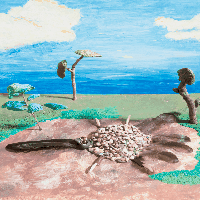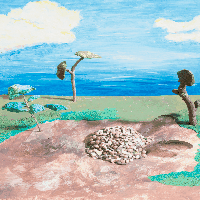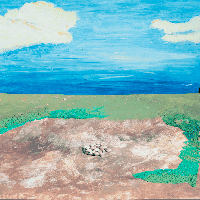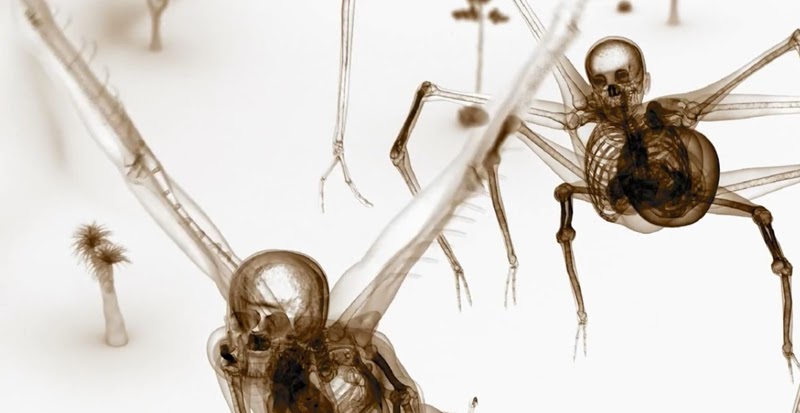Monday, April 14, 2014
9000 dead in the name of art
http://www.huffingtonpost.com/2012/10/16/damien-hirst-kills-9000-b_n_1970627.html
Butterfly Porn
http://www.independent.co.uk/arts-entertainment/art/features/porn-magazines-turned-into-butterflies-for-artists-protest-against-damien-hirst-9248807.html
Tuesday, April 8, 2014
Sunday, April 6, 2014
Friday, March 28, 2014
Large altars and installations by Amalia Mesa-Bains
Large altars and installations by Amalia Mesa-Bains - spiritual cabinets of curiosity
http://webcache.googleusercontent.com/search?q=cache:http://www.phantasmaphile.com/2008/12/amalia-mesabains.html
http://webcache.googleusercontent.com/search?q=cache:http://www.phantasmaphile.com/2008/12/amalia-mesabains.html
Thursday, March 20, 2014
"Wunderboxes" Light Box Configurations
http://mocoloco.com/fresh2/2011/03/02/wunderboxes-by-postlerferguson.php
Tuesday, March 18, 2014
Monday, March 17, 2014
Sunday, March 16, 2014
Friday, March 7, 2014
Wednesday, March 5, 2014
Mark Dion
Saw this piece by Mark Dion at the Herbert F. Johnson Museum of Art at Cornell University this weekend and thought I'd share some photos of it.
Tuesday, February 25, 2014
Monday, February 24, 2014
Interesting Find on Gizmodo
http://gizmodo.com/a-tiny-desktop-museum-with-dinosaur-eggs-moon-rocks-a-1529608087
Saturday, February 22, 2014
Mammal/Oology Collections
Humans as a keystone species (caregivers)
- a keystone species is a species that has a disproportionately large effect on its environment relative to its abundance
- caregivers as both a positive and negative forces upon the space we occupy.
- the value system or hierarchy dictating what is collected (often no apparent, passed off as a regional concern)
Thursday, February 20, 2014
A collection of funny and interesting notes and labels from the Ornithology Collection
On the door of the mammal collection.
Oil spill casualties.
"Does not occur in Brazil"
Escaped from zoo.
"Most data 'lost by students.'"
Tuesday, February 18, 2014
The Way of the Shovel: Art as Archaeology show in Museum of Contemporary Art in Chicago
Caught this in Chicago while I was at CAA.
,+2007%E2%80%93present.jpg) |
| Michael Rakowitz The Invisible Enemy Should Not Exist (detail), 2007–present |
"The Way of the Shovel: Art as Archaeology traces the interest in history, archaeology, and archival research that defines some of the most highly regarded art of the last decade. Consisting almost entirely of work produced after the year 2000, The Way of the Shovel re-imagines the art world as an alternative “History Channel” that is as concerned with remembering histories as it is with challenging their truthfulness.
The exhibition is arranged according to several conceptual underpinnings. In the first strand, archaeology is considered metaphorically, with an emphasis on art that takes the form of historical, often archival, research. Most of this work is photographic in nature, much of it moving-image based, and explores art’s documentary powers. Key figures in this category include Phil Collins, Moyra Davey, Tacita Dean, Stan Douglas, Joachim Koester, Deimantas Narkevicius, Anri Sala, Hito Steyerl, and Ana Torfs, among others. In the second strand, archaeology is considered more literally, in works that question the relationship between matter (stuff, things) and historical truth. This section features the sculptural work of artists such as Cyprien Gaillard, Daniel Knorr, Michael Rakowitz, and Simon Starling, as well as artworks that address the political dimension of archaeology by Mariana Castillo Deball and Jean-Luc Moulène. Two “exhibitions-within-the-exhibition” take a closer look at the towering figure of Robert Smithson, art’s quintessential searcher, and at psychoanalysis as an archaeology of the mind. In these subsections, we encounter the work of Jason Lazarus, Tony Tasset, Shellburne Thurber, and others.
Although broad in both geographic and generational scope, The Way of the Shovel also focuses on the history of its own location, Chicago. As part of the exhibition, artist Pamela Bannos presentsShifting Grounds: Block 21 and Chicago’s MCA, a research project that explores the history of the plot of land on which the MCA stands today. In addition to elements on display at the museum, the project can be viewed online."
Upcoming Talk might be interesting for some
“The Culture of Dolphins & the Dolphins of Culture”
Alan Rauch
Professor of English, University of North Carolina at Charlotte
Author of Dolphin (Reaktion Books, 2014)
February 25, 2014, 7–9 PM
Florida Museum of Natural History
3215 Hull Rd., Gainesville, Florida 32611
Sponsored by: the Department of English, University of Florida;
HHMI-UF Science for Life; and the Florida Museum of Natural History
This event is free and open to the general public
Dolphins are remarkable creatures by any definition. We love them for their beauty, their intelligence, and their obvious perception that we, too, can be interesting. Dolphins fascinate us because of they are both familiar and strange. But it is difficult for us to comprehend the real lives of these engaging and highly social beings, who live in an aquatic environment that is unforgiving to us. And thus, part of our captivation with dolphins is not because they are like us, or because they seem to enjoy our company (some may, but most are indifferent at best); rather, it is because they are fundamentally unlike us.
In this presentation I will explore dolphin biology, behavior, anatomy, as well as dolphin “culture,” and the human cultures in which they play important roles.
Alan Rauch is Professor of English at UNC Charlotte. A native of Montréal, Québec, he earned a B.Sc. in biology and zoology from McGill University. After working closely with dolphins at Montréal’s Alcan Aquarium and at several research sites in Florida, he obtained his M.S. in zoology and M.S. and Ph.D. in literature from Rutgers University. His most recent book, Dolphin—which includes numerous photos and illustrations from his personal collection—is a scientific and cultural view of all dolphin species.
Sunday, February 16, 2014
Curious natural history collages
Artist uses natural history and scientific references to make art collages:
http://www.visualnews.com/2011/12/01/cryptic-collages-demand-a-second-look/
http://www.visualnews.com/2011/12/01/cryptic-collages-demand-a-second-look/
Saturday, February 15, 2014
Wunderblock
Thought someone might find this interesting. Could be a jumping-off point for examining memory as a collection?
http://www.nodecenter.org/projects/exhibitions/wunderblock/
http://www.nodecenter.org/projects/exhibitions/wunderblock/
Tuesday, February 11, 2014
Interesting new wunderkammer.
http://www.fowler.ucla.edu/exhibitions/fowler-at-fifty-new-world-wunderkammer
http://www.fowler.ucla.edu/exhibitions/fowler-at-fifty-new-world-wunderkammer
Sunday, February 9, 2014
Friday, February 7, 2014
Thursday, February 6, 2014
Absence (Conspicuous, On the Margins, or Otherwise)
The collection holds most sway over the mind of the collector when the collection is incomplete. What’s missing is the most intriguing both within the larger collection and when studying the variants against the “type.” In addition, each collection represents displacement from its origin, ethnographically, and environmentally which leads to the increase of the value of the collected specimen as animals approach extinction. This collection documents aspects of absence.
(needs refinement)
Wednesday, February 5, 2014
Natural History Cataloging Resource
This website by the American Museum of Natural History has good guidelines and general information about how natural history museums accession, number, catalog, and organize their acquisitions and might act as a model for anyone looking at archival techniques as part of their wunderkammer.
This website by the American Museum of Natural History has good guidelines and general information about how natural history museums accession, number, catalog, and organize their acquisitions and might act as a model for anyone looking at archival techniques as part of their wunderkammer.
Tuesday, February 4, 2014
The Gestrandetreich, a new branch for the re-purposed Wunderkammer. by Miguel Saludes
For this contemporary revision of the Wunderkammer I’d like
to create a branch dedicated to the collection of objects both natural and
manmade found in the beach. I view the beach as a midpoint desert, a purgatory
where elements from both the sea and the land meet and pile up creating a disparate,
Illogical museum. I wish to create a space where these oddities could find permanence,
a final resting place. This space will also allow the audience to study the
objects themselves, and meditate about their origins, their interactions, and the
messages they might communicate about nature, the environment, and contemporary
life. I wish to call this branch the Gestrandetreich, a German composite word
that combines Gestrandet, meaning beached, or washed ashore, and Reich, meaning
realm, or domain. A rough translation of this term would be “domain of the
washed ashore”.
Bowerbirds as Collectors
To woo a mate, male bowerbirds decorate, lavishly.
http://ngm.nationalgeographic.com/2010/07/bowerbirds/laman-photography
Sunday, February 2, 2014
Lucy Lippard's 557,087
This exhibition by the artist and curator Lucy Lippard is a really interesting example of using the organizational conventions of libraries and museums to create a collection and shows a link between the roles of curators, artists, and collectors. The entire show consisted of index cards from a card catalog that Lippard compiled with famous artists.
Museum language is used in a fine art context here while Lippard steps into the role of artist and curator through the act of "collecting" other artists, anecdotes, and concepts on the cards. I stumbled upon this while reading Paul O'Neill's book The Culture of Curating and the Curating of Culture(s) in which O'Neill mentions a great point about Lippard's collection that Peter Plagens made:
" Lippard's curatorial hand in the exhibited work resulted in a 'total style to the show, a style so pervasive as to suggest that Lucy Lippard is in fact the artist and that her medium is other artists.'"
This exhibition by the artist and curator Lucy Lippard is a really interesting example of using the organizational conventions of libraries and museums to create a collection and shows a link between the roles of curators, artists, and collectors. The entire show consisted of index cards from a card catalog that Lippard compiled with famous artists.
Museum language is used in a fine art context here while Lippard steps into the role of artist and curator through the act of "collecting" other artists, anecdotes, and concepts on the cards. I stumbled upon this while reading Paul O'Neill's book The Culture of Curating and the Curating of Culture(s) in which O'Neill mentions a great point about Lippard's collection that Peter Plagens made:
" Lippard's curatorial hand in the exhibited work resulted in a 'total style to the show, a style so pervasive as to suggest that Lucy Lippard is in fact the artist and that her medium is other artists.'"
Saturday, February 1, 2014
Butterfly Rainforest/ Research Lab Visit Photos
Zaina made a friend.
A lot of butterfly collections come to the museum in cigar boxes.
A bucket of butterflies.
Thursday, January 30, 2014
Spaces for species and unexpected pieces
Pretending this exhibit was just for me. The drawers were my favorite part of the old museum when it was located in Dickerson. So I spent extra time with them. The custom inset spaces resonated in particular and led to my collection project (to be unveiled later).
Butterfly Visit
Butterfly Archive Tour:
Juan's ots (butterfly archive)
Subscribe to:
Comments (Atom)













































